Indoor Vegetable Gardening: Imagine plucking a ripe, juicy tomato straight from the vine in the middle of winter, right in your own kitchen! Sounds like a dream, doesn’t it? Well, it doesn’t have to be! For centuries, people have sought ways to cultivate food closer to home, from ancient Roman greenhouses to the ingenious window farms of Victorian England. The desire to connect with nature and nourish ourselves with fresh, homegrown produce is deeply ingrained in us.
But let’s face it, not everyone has a sprawling backyard or the time for extensive outdoor gardening. That’s where the magic of indoor vegetable gardening comes in! In this article, I’m going to share some simple, yet incredibly effective DIY tricks and hacks that will transform your living space into a thriving miniature farm. We’ll explore everything from choosing the right vegetables for indoor growing to creating the perfect lighting setup and even crafting your own self-watering containers.
Why do you need these DIY tricks? Because fresh, organic vegetables shouldn’t be a luxury. Growing your own food indoors is not only incredibly rewarding, but it also allows you to control exactly what goes into your meals, save money on groceries, and add a touch of vibrant greenery to your home. So, grab your gardening gloves (or maybe just your favorite mug of coffee!), and let’s get started on this exciting journey of bringing the garden indoors!
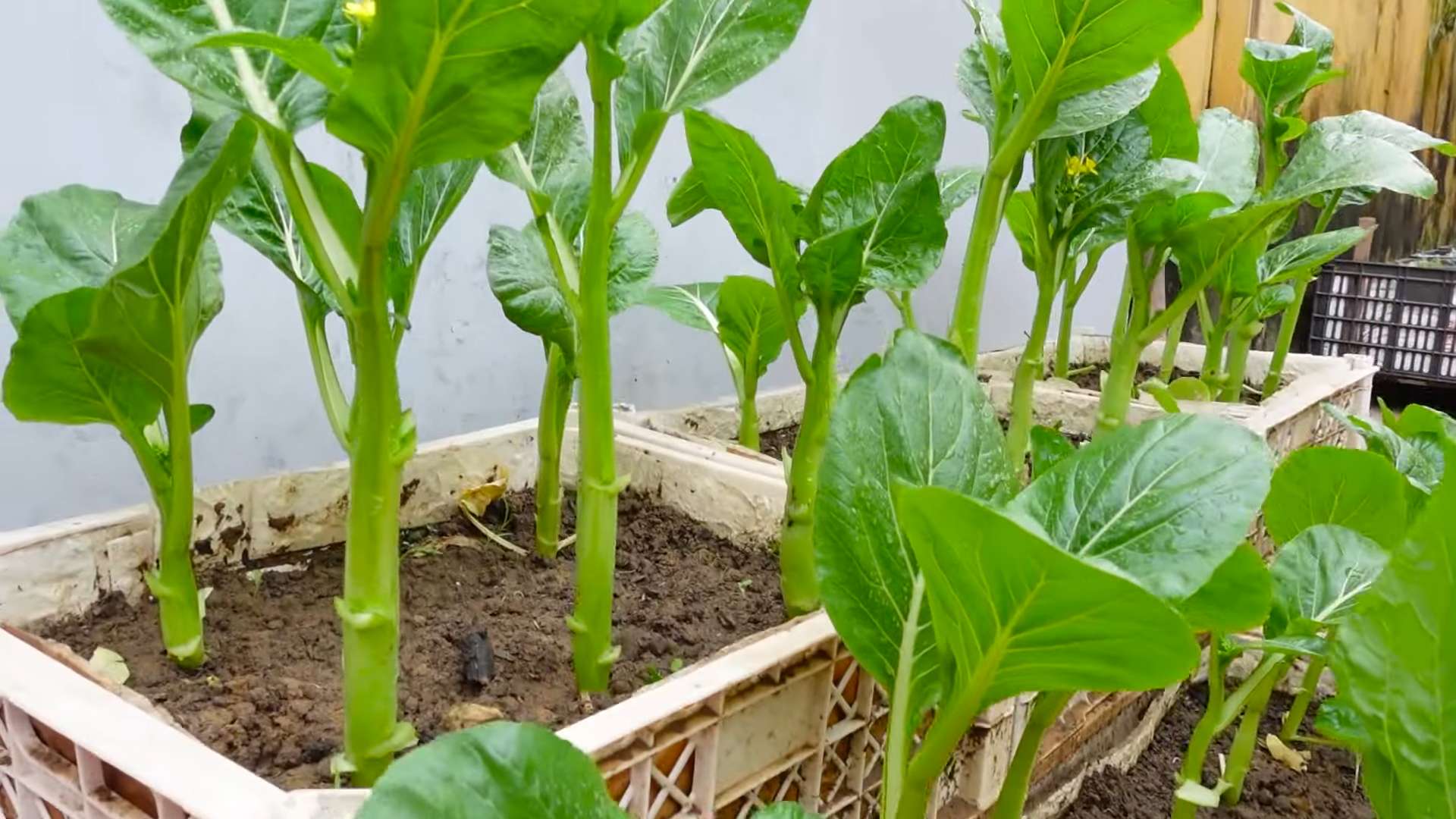
Creating Your Own Thriving Indoor Vegetable Garden
Okay, let’s dive into the wonderful world of indoor vegetable gardening! I’m so excited to share this with you because growing your own food, even in a small space, is incredibly rewarding. We’ll cover everything you need to know to get started and enjoy fresh, homegrown veggies all year round.
Choosing the Right Vegetables
Before we get our hands dirty, let’s talk about which vegetables thrive indoors. Not everything will flourish under artificial light, so it’s important to pick the right candidates.
* Leafy Greens: Lettuce, spinach, kale, and arugula are excellent choices. They grow quickly and don’t require intense sunlight.
* Herbs: Basil, mint, parsley, chives, and oregano are super easy to grow indoors and add amazing flavor to your cooking.
* Peppers: Smaller pepper varieties, like chili peppers or bell peppers, can do well indoors with enough light.
* Tomatoes: Dwarf or bush tomato varieties are best suited for indoor growing. Look for names like ‘Tiny Tim’ or ‘Roma’.
* Radishes: These fast-growing root vegetables are perfect for beginners.
* Scallions: You can even regrow scallions from the scraps you buy at the store!
Gathering Your Supplies
Now, let’s gather everything we need to create our indoor garden.
* Containers: Choose pots that are at least 6 inches deep for leafy greens and herbs, and 8-12 inches deep for tomatoes and peppers. Make sure they have drainage holes!
* Potting Mix: Use a high-quality potting mix specifically designed for vegetables. Avoid using garden soil, as it can compact and drain poorly in containers.
* Grow Lights: Unless you have a super sunny south-facing window, you’ll need grow lights. LED grow lights are energy-efficient and work great.
* Seeds or Seedlings: You can start from seeds or buy seedlings from a local nursery. Seedlings will give you a head start.
* Watering Can or Spray Bottle: For watering your plants.
* Fertilizer: A balanced liquid fertilizer will help your plants thrive.
* Seed Starting Tray (Optional): If you’re starting from seeds, a seed starting tray with a humidity dome is helpful.
* Plant Labels: To keep track of what you’ve planted.
Step-by-Step Guide to Planting Your Indoor Garden
Alright, let’s get planting! I’ll walk you through the process step-by-step.
1. Prepare Your Containers: Fill your chosen containers with potting mix, leaving about an inch of space at the top. Gently pat down the soil.
2. Planting Seeds (If Starting from Seed):
* Read the seed packet for specific planting instructions. Generally, you’ll make a small indentation in the soil (about ¼ inch deep for small seeds, ½ inch deep for larger seeds).
* Place 2-3 seeds in each indentation. This increases the chances of at least one seed germinating.
* Cover the seeds with a thin layer of potting mix and gently water.
* If using a seed starting tray, place the tray under grow lights and keep the soil consistently moist.
* Once the seedlings emerge and have a few sets of true leaves (the leaves that look like the adult plant’s leaves), thin them out, leaving only the strongest seedling in each cell.
3. Planting Seedlings (If Starting from Seedlings):
* Gently remove the seedling from its container. If the roots are tightly packed, gently loosen them with your fingers.
* Make a hole in the potting mix large enough to accommodate the seedling’s root ball.
* Place the seedling in the hole and gently backfill with potting mix.
* Water thoroughly.
4. Positioning Your Plants:
* Place your containers under grow lights. The distance between the lights and the plants will depend on the type of light you’re using. Check the manufacturer’s instructions. Generally, LED grow lights should be placed about 6-12 inches above the plants.
* If you’re using natural sunlight, place your plants in a south-facing window that receives at least 6 hours of direct sunlight per day. Rotate the plants regularly to ensure even growth.
5. Watering:
* Water your plants when the top inch of soil feels dry to the touch.
* Water deeply, until water drains out of the drainage holes.
* Avoid overwatering, as this can lead to root rot.
* Use a watering can or spray bottle to water gently, avoiding splashing water on the leaves.
6. Fertilizing:
* Start fertilizing your plants about 2-3 weeks after planting.
* Use a balanced liquid fertilizer, following the instructions on the label.
* Fertilize every 2-4 weeks, depending on the plant’s needs.
Maintaining Your Indoor Garden
Now that your garden is planted, let’s talk about how to keep it thriving!
* Light: Ensure your plants are getting enough light. If you’re using grow lights, keep them on for 14-16 hours per day.
* Watering: Check the soil moisture regularly and water as needed.
* Fertilizing: Continue fertilizing your plants regularly.
* Pruning: Prune your plants as needed to encourage bushier growth and remove any dead or yellowing leaves. For tomatoes, you’ll want to prune suckers (the shoots that grow between the main stem and the branches) to encourage fruit production.
* Pest Control: Keep an eye out for pests like aphids, spider mites, and whiteflies. If you spot any pests, treat them with an organic insecticide, such as neem oil or insecticidal soap.
* Pollination (For Tomatoes and Peppers): Tomatoes and peppers are self-pollinating, but they may need a little help indoors. You can gently shake the plants or use a small paintbrush to transfer pollen from one flower to another.
Troubleshooting Common Problems
Even with the best care, you might encounter some problems along the way. Here are a few common issues and how to address them:
* Yellowing Leaves: This could be a sign of overwatering, underwatering, nutrient deficiency, or lack of light. Adjust your watering schedule, fertilize your plants, and make sure they’re getting enough light.
* Leggy Growth: This is usually caused by insufficient light. Move your plants closer to the grow lights or provide more natural sunlight.
* Lack of Fruit Production: This could be due to insufficient pollination, lack of nutrients, or improper temperature. Hand-pollinate your plants, fertilize them regularly, and make sure they’re in a warm environment.
* Pests: As mentioned earlier, treat pests with an organic insecticide.
Harvesting Your Vegetables
The best part of indoor gardening is harvesting your own fresh vegetables!
* Leafy Greens: Harvest leafy greens when they’re young and tender. You can harvest individual leaves or cut the entire plant at the base.
* Herbs: Harvest herbs as needed. Pinch off the leaves or stems just above a leaf node to encourage bushier growth.
* Peppers: Harvest peppers when they’ve reached their desired color and size.
* Tomatoes: Harvest tomatoes when they’re fully ripe and have a deep red color.
* Radishes: Harvest radishes when they’re about an inch in diameter.
* Scallions: Harvest scallions when they’re about 6-8 inches tall.
Choosing the Right Grow Lights
Navigating the world of grow lights can be a bit overwhelming, so let’s break down the options and help you choose the best one for your indoor garden.
* LED Grow Lights: These are the most popular choice for indoor gardeners, and for good reason. They’re energy-efficient, long-lasting, and produce very little heat. They also come in a variety of spectrums, so you can choose one that’s specifically designed for vegetative growth or flowering. I highly recommend LED grow lights for beginners.
* Fluorescent Grow Lights: These are a more affordable option than LED grow lights, but they’re not as energy-efficient and they produce more heat. They’re a good choice for growing leafy greens and herbs.
* High-Intensity Discharge (HID) Grow Lights: These are the most powerful type of grow light, but they’re also the most expensive and they produce a lot of heat. They’re typically used for growing larger plants, like tomatoes and peppers. I wouldn’t recommend these for beginners due to the heat and energy consumption.
When choosing a grow light, consider the size of your growing area, the type of plants you’
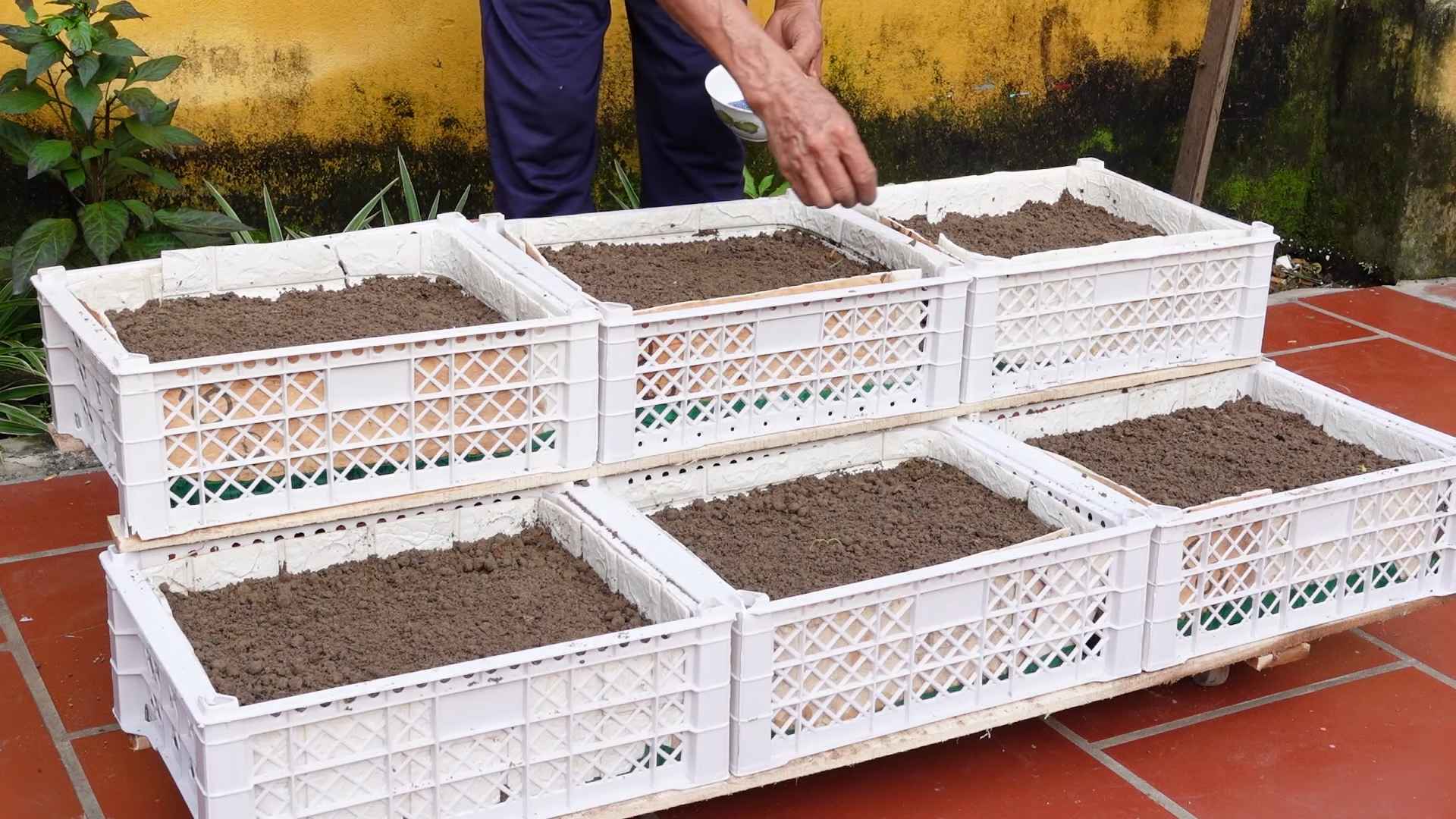
Conclusion
So, there you have it! Transforming your living space into a thriving indoor vegetable garden is not only achievable but also incredibly rewarding. We’ve explored the ins and outs of creating a miniature ecosystem right inside your home, and hopefully, you’re feeling inspired to get your hands dirty.
Why is this DIY trick a must-try? Because it offers a multitude of benefits that extend far beyond just fresh produce. Imagine the satisfaction of harvesting your own tomatoes in the dead of winter, or snipping fresh herbs to elevate your culinary creations. Beyond the deliciousness, indoor vegetable gardening provides a therapeutic connection to nature, reduces your reliance on store-bought produce (often laden with pesticides and transported long distances), and adds a vibrant, living element to your home decor. It’s a sustainable, healthy, and aesthetically pleasing way to enhance your lifestyle.
But the beauty of indoor vegetable gardening lies in its adaptability. Don’t feel limited to the suggestions we’ve provided. Experiment with different varieties of vegetables and herbs to find what thrives best in your specific environment. Consider incorporating vertical gardening techniques to maximize space, or explore hydroponic systems for a more advanced approach. You could even create a themed garden, focusing on Mediterranean herbs, Asian greens, or a rainbow of colorful peppers. The possibilities are truly endless!
For example, if you live in a particularly sunny area, you might find that your plants need less supplemental lighting. Conversely, if your home is naturally dark, you might need to invest in more powerful grow lights. You can also adjust the soil mix to suit the specific needs of your chosen vegetables. Leafy greens like lettuce and spinach prefer a well-draining soil rich in nitrogen, while fruiting vegetables like tomatoes and peppers benefit from a soil mix that is slightly higher in phosphorus and potassium.
Another fun variation is to involve your children in the process. Gardening is a fantastic way to teach them about science, nutrition, and responsibility. Let them help with planting, watering, and harvesting, and watch their faces light up as they witness the miracle of life unfolding before their eyes.
Ultimately, the success of your indoor vegetable garden depends on your willingness to experiment, learn, and adapt. Don’t be afraid to make mistakes – they are valuable learning opportunities. And most importantly, have fun!
We wholeheartedly encourage you to embark on this exciting journey of indoor vegetable gardening. Start small, be patient, and enjoy the process of nurturing your own little green oasis. We are confident that you will be amazed by the results.
Now, we want to hear from you! Have you tried indoor vegetable gardening before? What challenges did you face, and what successes did you achieve? What are your favorite vegetables to grow indoors? Share your experiences, tips, and photos in the comments below. Let’s create a community of indoor gardening enthusiasts and inspire each other to grow our own food, no matter the season or location. Your insights could be invaluable to someone just starting out, and together, we can cultivate a greener, healthier future, one indoor garden at a time. Let’s get growing!
Frequently Asked Questions (FAQ)
What are the best vegetables to grow indoors for beginners?
Starting with easy-to-grow vegetables is key to building confidence and avoiding early discouragement. Some excellent choices for beginners include:
* **Leafy Greens:** Lettuce, spinach, kale, and arugula are relatively low-maintenance and can be harvested continuously as needed. They don’t require a lot of light and can tolerate cooler temperatures.
* **Herbs:** Basil, mint, chives, parsley, and oregano are all easy to grow indoors and add a burst of flavor to your meals. They thrive in sunny locations and require well-draining soil.
* **Radishes:** These fast-growing root vegetables are ready to harvest in just a few weeks. They prefer cool temperatures and well-drained soil.
* **Green Onions:** Simply place the root end of a green onion in a glass of water, and it will regrow. You can also plant them in soil for a more substantial harvest.
* **Peppers:** Smaller pepper varieties, like chili peppers or bell peppers, can be successfully grown indoors with adequate light and warmth.
How much light do indoor vegetables need?
Light is crucial for photosynthesis, the process by which plants convert light energy into chemical energy. Most vegetables require at least 6-8 hours of direct sunlight per day. However, if you don’t have access to a sunny window, you can supplement with artificial grow lights.
* **Natural Light:** South-facing windows typically provide the most sunlight. East- and west-facing windows offer moderate light, while north-facing windows provide the least.
* **Grow Lights:** LED grow lights are the most energy-efficient option and provide a full spectrum of light that plants need to thrive. Fluorescent grow lights are another option, but they are less energy-efficient and produce more heat. The distance between the grow light and the plants will depend on the intensity of the light and the specific needs of the vegetables. Generally, keep the lights a few inches above the plants and adjust as needed.
What type of soil is best for indoor vegetable gardening?
The ideal soil for indoor vegetable gardening is a well-draining potting mix that is rich in organic matter. Avoid using garden soil, as it can be too heavy and may contain pests or diseases.
* **Potting Mix:** A good quality potting mix will provide adequate drainage and aeration, which are essential for healthy root growth.
* **Compost:** Adding compost to your potting mix will provide essential nutrients and improve drainage.
So, there you have it! Transforming your living space into a thriving indoor vegetable garden is not only achievable but also incredibly rewarding. We’ve explored the ins and outs of creating a miniature ecosystem right inside your home, and hopefully, you’re feeling inspired to get your hands dirty.
Why is this DIY trick a must-try? Because it offers a multitude of benefits that extend far beyond just fresh produce. Imagine the satisfaction of harvesting your own tomatoes in the dead of winter, or snipping fresh herbs to elevate your culinary creations. Beyond the deliciousness, indoor vegetable gardening provides a therapeutic connection to nature, reduces your reliance on store-bought produce (often laden with pesticides and transported long distances), and adds a vibrant, living element to your home decor. It’s a sustainable, healthy, and aesthetically pleasing way to enhance your lifestyle.
But the beauty of indoor vegetable gardening lies in its adaptability. Don’t feel limited to the suggestions we’ve provided. Experiment with different varieties of vegetables and herbs to find what thrives best in your specific environment. Consider incorporating vertical gardening techniques to maximize space, or explore hydroponic systems for a more advanced approach. You could even create a themed garden, focusing on Mediterranean herbs, Asian greens, or a rainbow of colorful peppers. The possibilities are truly endless!
For example, if you live in a particularly sunny area, you might find that your plants need less supplemental lighting. Conversely, if your home is naturally dark, you might need to invest in more powerful grow lights. You can also adjust the soil mix to suit the specific needs of your chosen vegetables. Leafy greens like lettuce and spinach prefer a well-draining soil rich in nitrogen, while fruiting vegetables like tomatoes and peppers benefit from a soil mix that is slightly higher in phosphorus and potassium.
Another fun variation is to involve your children in the process. Gardening is a fantastic way to teach them about science, nutrition, and responsibility. Let them help with planting, watering, and harvesting, and watch their faces light up as they witness the miracle of life unfolding before their eyes.
Ultimately, the success of your indoor vegetable garden depends on your willingness to experiment, learn, and adapt. Don’t be afraid to make mistakes – they are valuable learning opportunities. And most importantly, have fun!
We wholeheartedly encourage you to embark on this exciting journey of indoor vegetable gardening. Start small, be patient, and enjoy the process of nurturing your own little green oasis. We are confident that you will be amazed by the results.
Now, we want to hear from you! Have you tried indoor vegetable gardening before? What challenges did you face, and what successes did you achieve? What are your favorite vegetables to grow indoors? Share your experiences, tips, and photos in the comments below. Let’s create a community of indoor gardening enthusiasts and inspire each other to grow our own food, no matter the season or location. Your insights could be invaluable to someone just starting out, and together, we can cultivate a greener, healthier future, one indoor garden at a time. Let’s get growing!
Frequently Asked Questions (FAQ)
What are the best vegetables to grow indoors for beginners?
Starting with easy-to-grow vegetables is key to building confidence and avoiding early discouragement. Some excellent choices for beginners include:
* **Leafy Greens:** Lettuce, spinach, kale, and arugula are relatively low-maintenance and can be harvested continuously as needed. They don’t require a lot of light and can tolerate cooler temperatures.
* **Herbs:** Basil, mint, chives, parsley, and oregano are all easy to grow indoors and add a burst of flavor to your meals. They thrive in sunny locations and require well-draining soil.
* **Radishes:** These fast-growing root vegetables are ready to harvest in just a few weeks. They prefer cool temperatures and well-drained soil.
* **Green Onions:** Simply place the root end of a green onion in a glass of water, and it will regrow. You can also plant them in soil for a more substantial harvest.
* **Peppers:** Smaller pepper varieties, like chili peppers or bell peppers, can be successfully grown indoors with adequate light and warmth.
How much light do indoor vegetables need?
Light is crucial for photosynthesis, the process by which plants convert light energy into chemical energy. Most vegetables require at least 6-8 hours of direct sunlight per day. However, if you don’t have access to a sunny window, you can supplement with artificial grow lights.
* **Natural Light:** South-facing windows typically provide the most sunlight. East- and west-facing windows offer moderate light, while north-facing windows provide the least.
* **Grow Lights:** LED grow lights are the most energy-efficient option and provide a full spectrum of light that plants need to thrive. Fluorescent grow lights are another option, but they are less energy-efficient and produce more heat. The distance between the grow light and the plants will depend on the intensity of the light and the specific needs of the vegetables. Generally, keep the lights a few inches above the plants and adjust as needed.
What type of soil is best for indoor vegetable gardening?
The ideal soil for indoor vegetable gardening is a well-draining potting mix that is rich in organic matter. Avoid using garden soil, as it can be too heavy and may contain pests or diseases.
* **Potting Mix:** A good quality potting mix will provide adequate drainage and aeration, which are essential for healthy root growth.
* **Compost:** Adding compost to your potting mix will provide essential nutrients and improve drainage.
* **Perlite or Vermiculite:** These materials can be added to the potting mix to improve drainage and aeration.
* **pH Level:** Most vegetables prefer a slightly acidic soil with a pH between 6.0 and 7.0. You can test the pH of your soil using a soil testing kit.
How often should I water my indoor vegetables?
The frequency of watering will depend on several factors, including the type of vegetable, the size of the pot, the temperature, and the humidity. As a general rule, water when the top inch of soil feels dry to the touch.
* **Check the Soil:** Stick your finger into the soil to check for moisture. If the soil feels dry, it’s time to water.
* **Water Thoroughly:** When you water, water thoroughly until water drains out of the bottom of the pot. This ensures that the roots are getting enough moisture.
* **Avoid Overwatering:** Overwatering can lead to root rot, which is a common problem in indoor vegetable gardens. Make sure the pot has drainage holes and avoid letting the plants sit in standing water.
* **Consider Humidity:** If the air is dry, you may need to water more frequently. You can increase humidity by misting the plants or placing a tray of water near them.
How do I fertilize my indoor vegetables?
Vegetables need nutrients to grow and produce fruit. Fertilize your indoor vegetables regularly with a balanced fertilizer.
* **Balanced Fertilizer:** A balanced fertilizer contains equal amounts of nitrogen, phosphorus, and potassium (NPK). Look for a fertilizer with an NPK ratio of 10-10-10 or 20-20-20.
* **Organic Fertilizer:** Organic fertilizers, such as compost tea or fish emulsion, are a great way to provide nutrients to your plants without using synthetic chemicals.
* **Follow Instructions:** Always follow the instructions on the fertilizer label. Over-fertilizing can damage your plants.
* **Fertilize Regularly:** Fertilize your vegetables every 2-4 weeks during the growing season.
How do I deal with pests and diseases in my indoor vegetable garden?
Indoor vegetable gardens are less susceptible to pests and diseases than outdoor gardens, but they can still occur.
* **Inspect Regularly:** Regularly inspect your plants for signs of pests or diseases.
* **Isolate Affected Plants:** If you find a pest or disease, isolate the affected plant to prevent it from spreading to other plants.
* **Natural Pest Control:** Use natural pest control methods, such as insecticidal soap or neem oil, to control pests.
* **Good Air Circulation:** Ensure good air circulation to prevent fungal diseases.
* **Cleanliness:** Keep your indoor garden clean and free of debris.
Can I grow vegetables indoors year-round?
Yes, with proper lighting and temperature control, you can grow vegetables indoors year-round. This is one of the biggest advantages of indoor vegetable gardening!
* **Temperature Control:** Maintain a consistent temperature between 65°F and 75°F.
* **Adequate Lighting:** Provide adequate lighting, either through natural sunlight or grow lights.
* **Succession Planting:** Practice succession planting to ensure a continuous harvest. This involves planting new seeds every few weeks.
* **Choose Appropriate Varieties:** Select vegetable varieties that are well-suited for indoor growing.
What size pots should I use for indoor vegetable gardening?
The size of the pot will depend on the type of vegetable you are growing.
* **Leafy Greens and Herbs:** These can be grown in smaller pots, such as 6-8 inch pots.
* **Tomatoes and Peppers:** These require larger pots, such as 12-14 inch pots.
* **Root Vegetables:** These need deep pots to

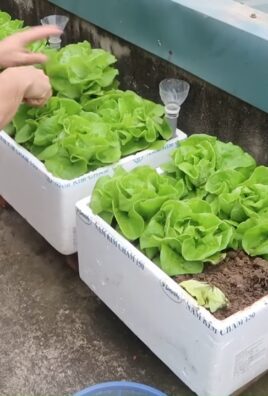
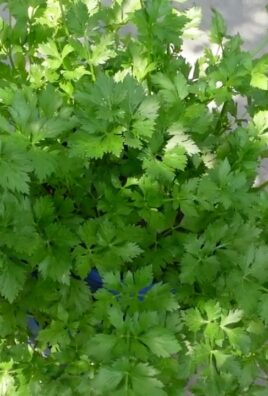
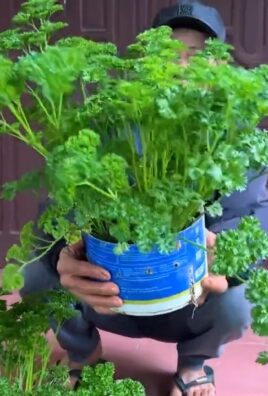
Leave a Comment